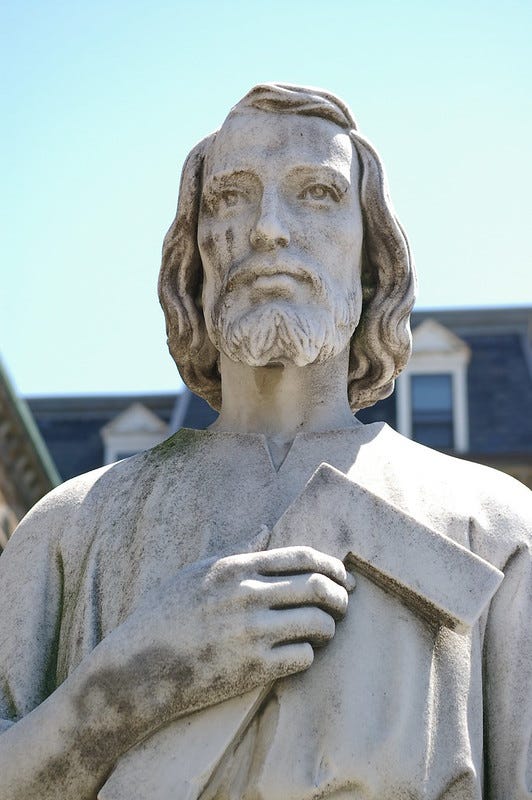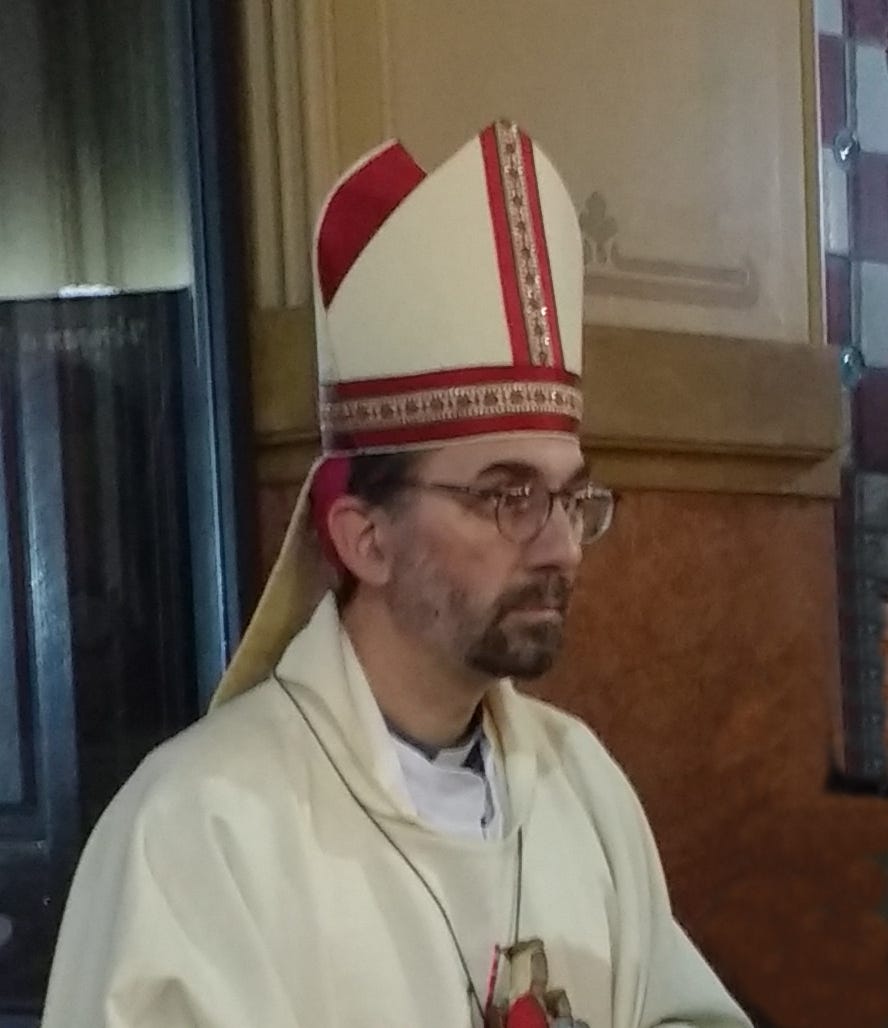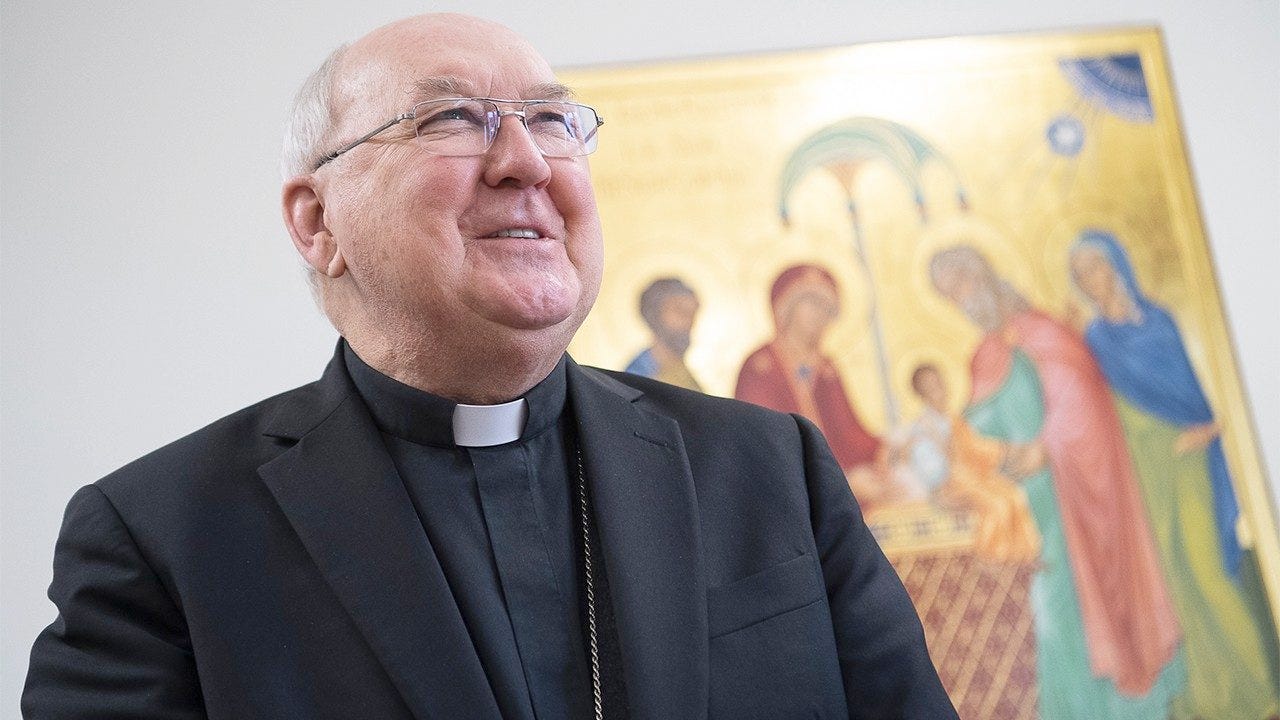Saturday, May 1, is the Feast of St. Joseph the Worker.
The feast was first declared by Pope Pius XII in 1955.
Here are a few more things to know about St. Joseph the Worker, and his feast.

“Go to Joseph!”
Pius XII, to the Catholic Association of Italian Workers, May 1, 1955:
“There could be no better protector to help you bring the spirit of the Gospel into your life… From the heart of God-made-Man, the Savior of the world, the spirit of Gospel flows into you and into all men; but it is certain that no worker was ever so perfectly and deeply penetrated by it as was the foster father of Jesus, who lived with him in the closest intimacy and community of family and work. Thus, if you want to be close to Christ, We repeat to you today: “Ite ad Ioseph!” — “Go to Joseph!”
“We are pleased to announce our decision to institute — as I am now doing — the liturgical feast of St. Joseph the Worker, to take place every year on May 1st… The humble craftsman of Nazareth not only personifies to God and the Holy Church the dignity of the laborer, but he is also always the provident guardian of you and your families.”
In 1889, May 1, May Day, was chosen as “International Workers’ Day” by the Marxist International Socialist Workers’ Congress. Pius XII is often reported to have chosen to commemorate St. Joseph on the same date as part of the Church’s effort to respond to the influence of atheistic political and social movements, by emphasizing the spiritual dimension of work, and their connection to the foster father of Christ. During his address, he told workers that:
“May 1, far from being a day of growing discord, hatred and violence, is and will be a recurring invitation to modern society to accomplish what still lacks social peace. A Christian holiday, therefore; that is, a day of jubilation for the concrete and progressive triumph of the Christian ideals of the great family of work.”
Expressing solidarity with Italy’s working class, he added:
“You will be able to recognize, among the many discordant and bewitching voices addressed to you from various sides, some to undermine your souls, others to humiliate you as men, or to rob you of your legitimate rights as workers, will you be able to recognize who is and will always be your sure guide, who your faithful defender, your sincere Father. Yes dear workers; the pope and the Church cannot escape the divine mission of guiding, protecting, loving above all the suffering, the most dear, the most in need of defense and help, be they workers or other children of the people.”
St. Joseph’s holy stairs
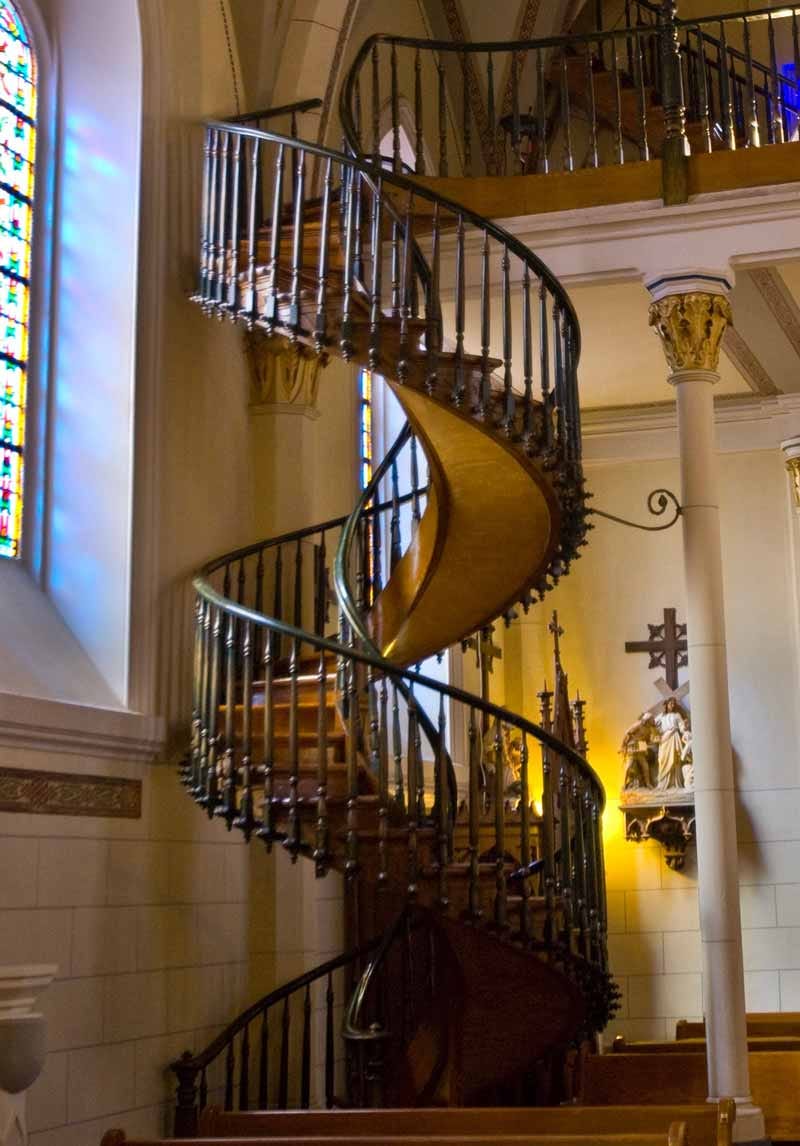
In the late nineteenth century, the Sisters of Loretto began to construct a chapel in Santa Fe, New Mexico, on the grounds of their convent and the girls’ school they ran. They would it the Chapel of Our Lady of Light.
Midway through construction, the chapel’s architect died, and no one was sure what his plans were for finalizing the chapel. He had overseen construction of a choir loft, but not stairs to access it. Builders said a staircase would be too big, and advised knocking down the choir loft.
Instead, the sisters decided to pray a novena to St. Joseph.
Here, according to the Loretto chapel, is what happened next:
“On the final day of the novena, a carpenter appeared with only a hammer and carpenter’s square. He built what is now known as the “Miraculous Staircase” with simple tools and wooden pegs. The rare wood is not native to the American Southwest. When the staircase was complete, it is said that the carpenter disappeared without receiving thanks or payment. The Sisters tried all local lumber stores but could not find accounts open for supplies for their stairs. Some believe the carpenter was St. Joseph himself while others believe that is was someone sent by St. Joseph. What is known is that the Sisters of Loretto prayed, and their prayers were answered.”
“The stairway's carpenter, whoever he was, built a magnificent structure. The design was innovative for the time and some of the design considerations still perplex experts today. The staircase has two 360 degree turns and no visible means of support. It is said that the staircase was built without nails—only wooden pegs.” the chapel adds.
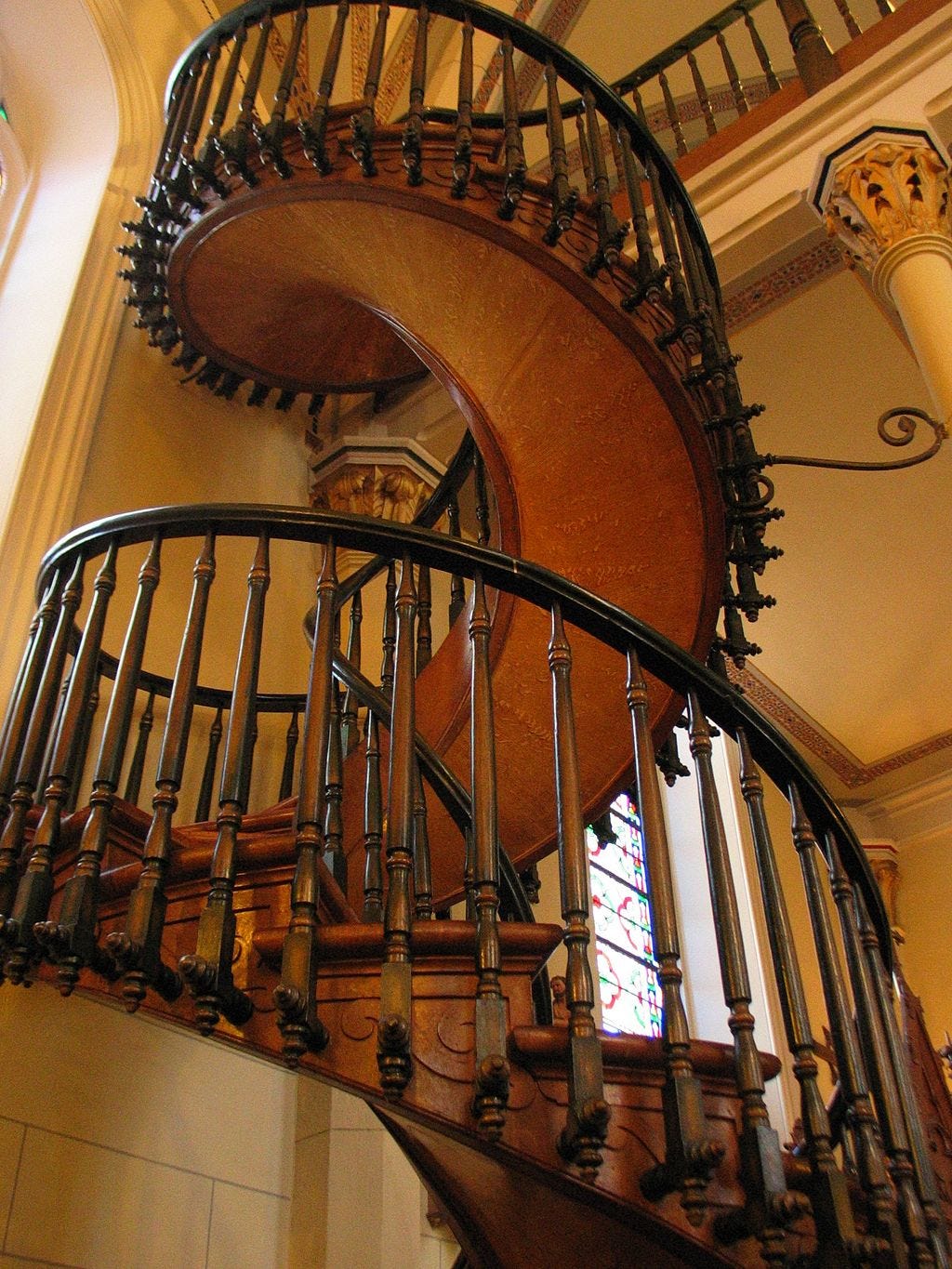
Pope Francis
“Working persons, whatever their job may be, are cooperating with God himself, and in some way become creators of the world around us. The crisis of our time, which is economic, social, cultural and spiritual, can serve as a summons for all of us to rediscover the value, the importance and necessity of work for bringing about a new “normal” from which no one is excluded. Saint Joseph’s work reminds us that God himself, in becoming man, did not disdain work. The loss of employment that affects so many of our brothers and sisters, and has increased as a result of the Covid-19 pandemic, should serve as a summons to review our priorities. Let us implore Saint Joseph the Worker to help us find ways to express our firm conviction that no young person, no person at all, no family should be without work!”
Apostolic letter Patris Corde, December 8, 2020

